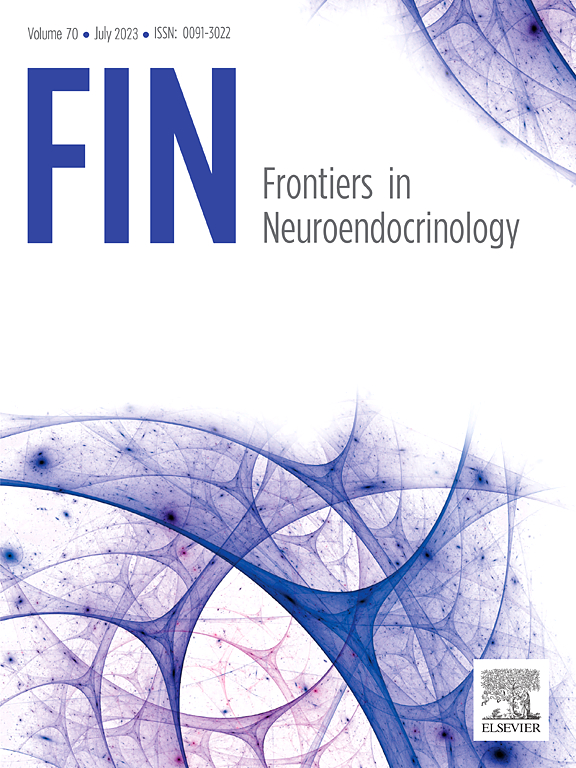Endocrine disrupting effects on morphological synaptic plasticity
IF 6.7
1区 医学
Q1 ENDOCRINOLOGY & METABOLISM
引用次数: 0
Abstract
Neural regulation of the homeostasis depends on healthy synaptic function. Adaptation of synaptic functions to physiological needs manifests in various forms of synaptic plasticity (SP), regulated by the normal hormonal regulatory circuits. During the past several decades, the hormonal regulation of animal and human organisms have become targets of thousands of chemicals that have the potential to act as agonists or antagonists of the endogenous hormones. As the action mechanism of these endocrine disrupting chemicals (EDCs) came into the focus of research, a growing number of studies suggest that one of the regulatory avenues of hormones, the morphological form of SP, may well be a neural mechanism affected by EDCs. The present review discusses known and potential effects of some of the best known EDCs on morphological synaptic plasticity (MSP). We highlight molecular mechanisms altered by EDCs and indicate the growing need for more research in this area of neuroendocrinology.
内分泌干扰对形态突触可塑性的影响
神经对平衡的调节依赖于健康的突触功能。突触功能对生理需求的适应表现为各种形式的突触可塑性(SP),由正常的激素调节回路调节。在过去几十年中,动物和人类生物体的激素调节已成为数千种化学物质的目标,这些化学物质有可能成为内源性激素的激动剂或拮抗剂。随着这些干扰内分泌的化学品(EDCs)的作用机制成为研究的焦点,越来越多的研究表明,激素的调节途径之一,即 SP 的形态形式,很可能是一种受 EDCs 影响的神经机制。本综述讨论了一些最著名的 EDC 对形态突触可塑性(MSP)的已知和潜在影响。我们强调了被 EDCs 改变的分子机制,并指出在这一神经内分泌学领域越来越需要开展更多的研究。
本文章由计算机程序翻译,如有差异,请以英文原文为准。
求助全文
约1分钟内获得全文
求助全文
来源期刊

Frontiers in Neuroendocrinology
医学-内分泌学与代谢
CiteScore
13.30
自引率
6.80%
发文量
62
审稿时长
68 days
期刊介绍:
Frontiers in Neuroendocrinology (FIN) publishes a wide range of informative articles including comprehensive reviews, systematic reviews, opinion pieces, and meta-analyses. While the majority of reviews are invited, we also embrace unsolicited reviews and meta-analyses, as well as proposals for thematic special issues, provided they meet our rigorous quality standards. In addition, we encourage authors to submit commentaries that concisely present fresh ideas or offer further analysis to delve deeper into the implications of an article published in our journal.
 求助内容:
求助内容: 应助结果提醒方式:
应助结果提醒方式:


